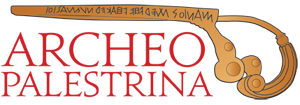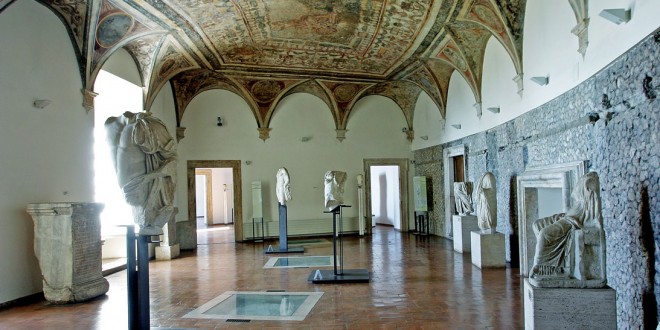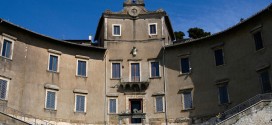The National Archaeological Museum of Palestrina, hosted inside the Colonna-Barberini Palace, was opened in 1998; the Museum set-up was based substantially on thematic criteria that took in considaration the chronological elements and source of finds.
The museum itinerary takes place within succession of different themes, from the cult of Fortune, Hellenistic and Iconic sculpture to the Augustan and Imperial Age till Epigraphic documents and other cults of Praeneste.
These sections are set up in museum halls on the first floor, where the famous sculpture of the Capitoline triad is also exposed, originaly from Guidonia, unique work of worldwide importance, rescued by police in 1993 after the purloining and illicit export abroad as a result of illegal excavation.
The 2nd floor is dedicated to the necropoli and sanctuaries. Right wing hall exposes the finds of corredi, graves from middle Republican era (4th -3rd century. b.c.): Cistus, mirrors, strigls and pottery; busts and funerary cippi, tombs marks; the Tuff sarcophagus.
In the left wing hall the votive Terra-cotta artifacts of the Sanctuary of Hercules are arranged, other important place of worship of Republican era of Praeneste, and last but not the least- architectural decoration materials: both nucleus are largely from recent excavations.
On the 3rd floor the large polychrome mosaic with the flooding of the Nile is visible , late 2nd century BC, and the plastic model of the Sanctuary of Fortuna in 1:50 scale.
 Archeopalestrina Percorso archeologico di Palestrina, l'antica Praeneste
Archeopalestrina Percorso archeologico di Palestrina, l'antica Praeneste

